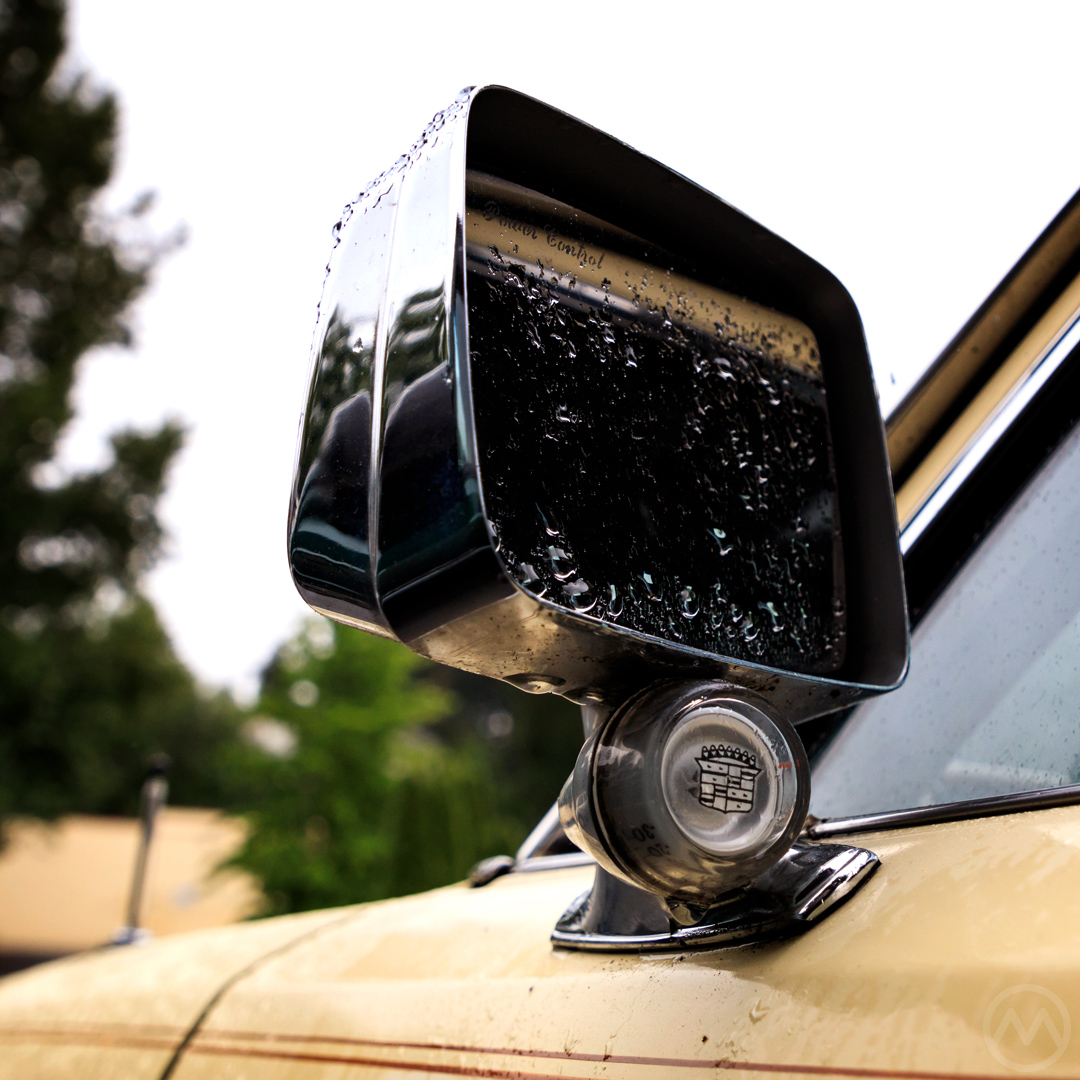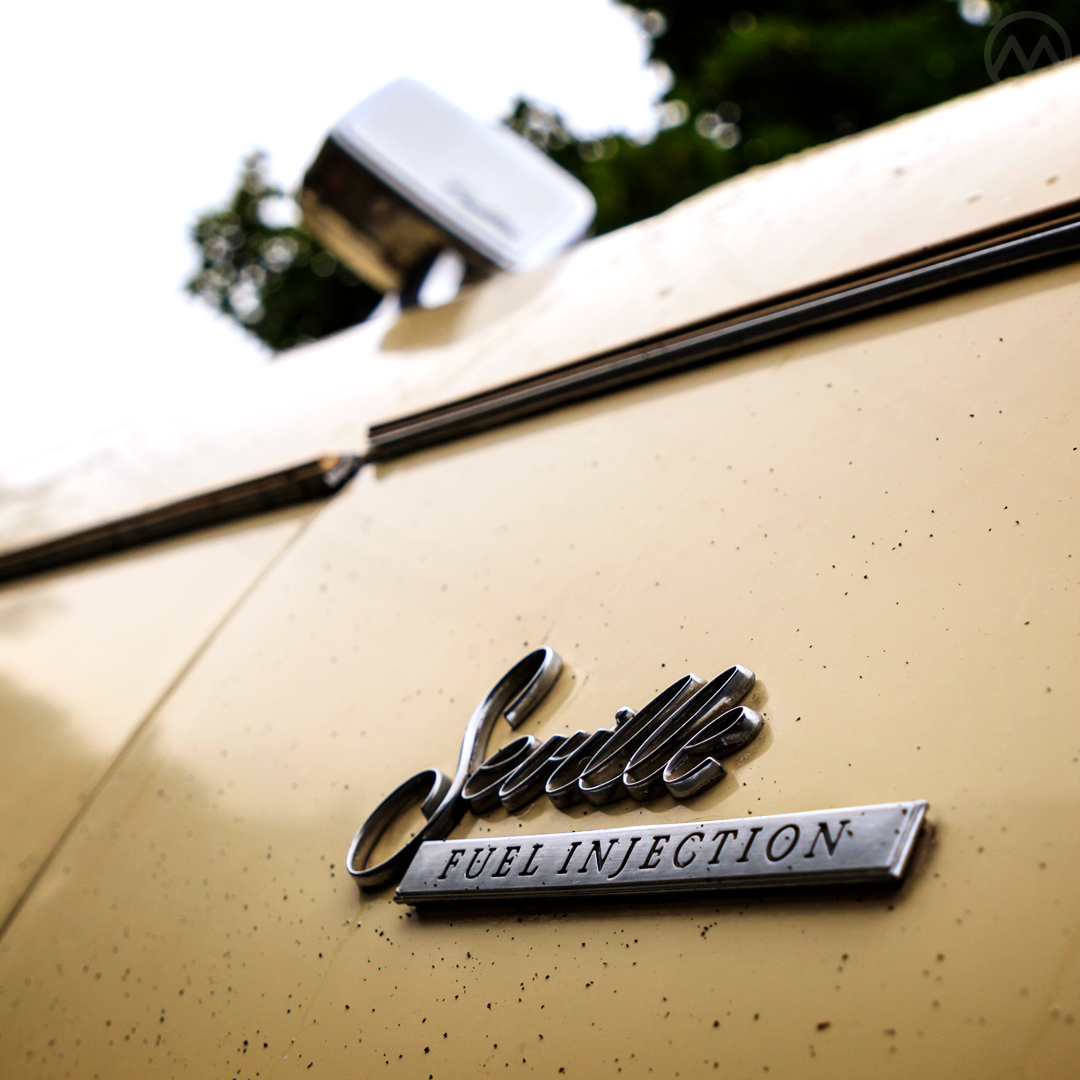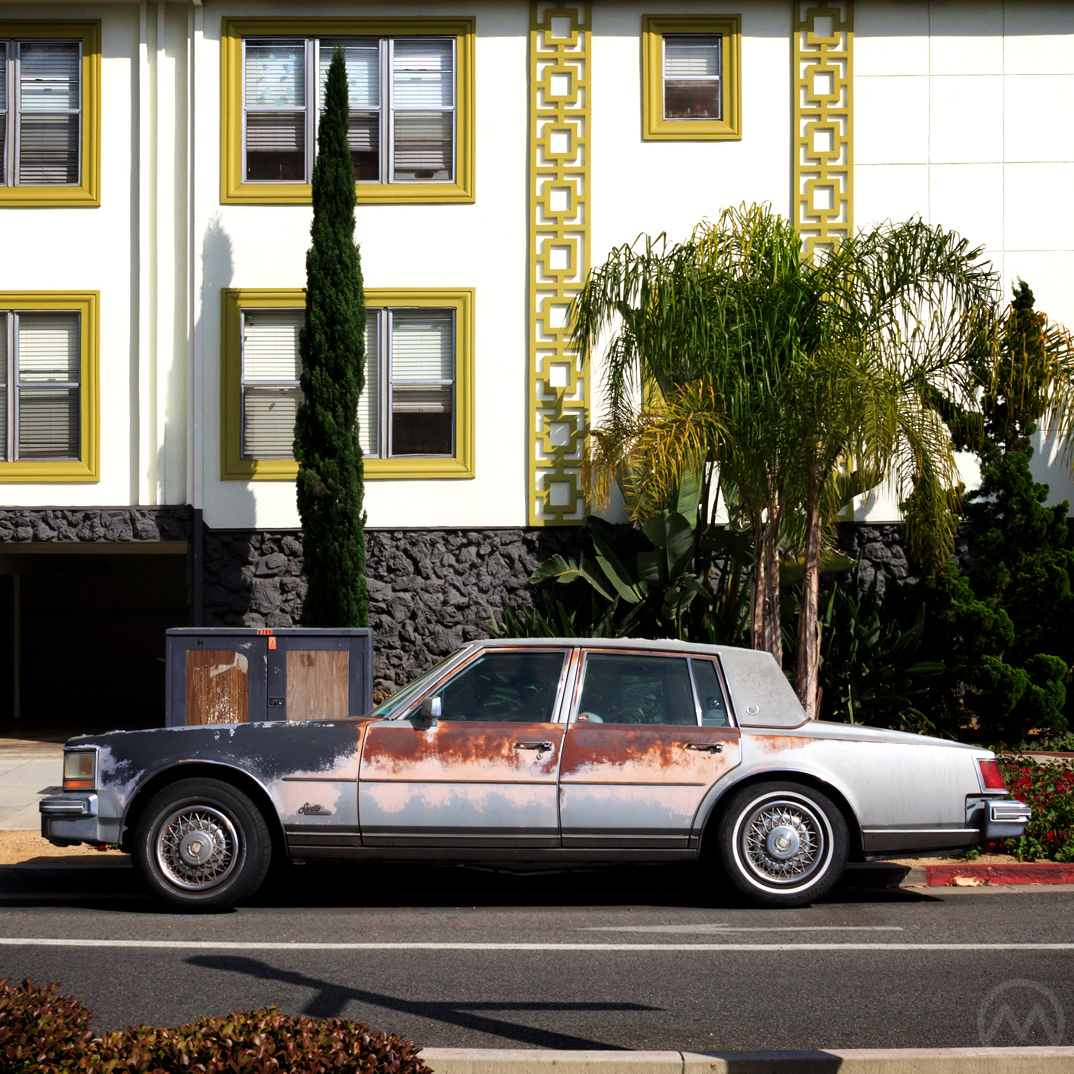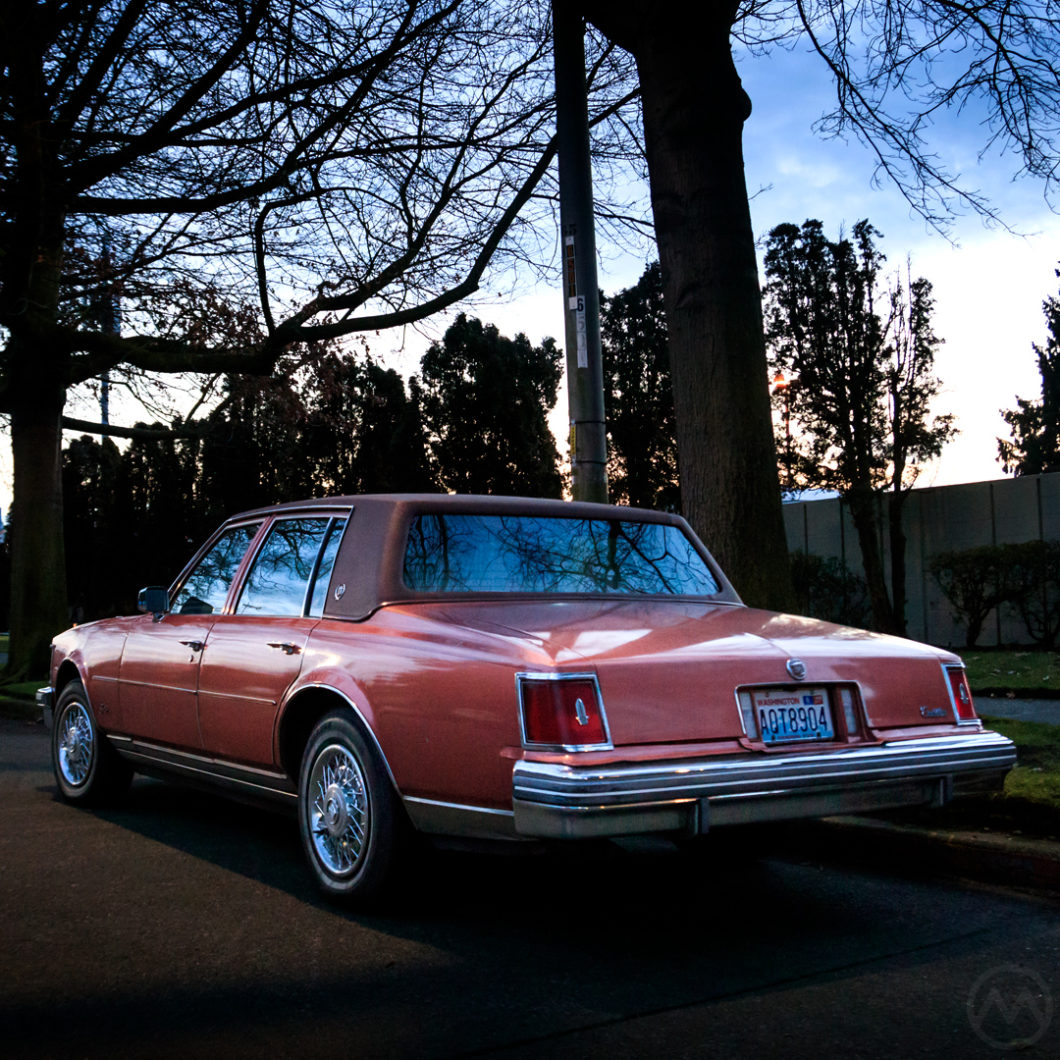Usually, big corporate decisions aren’t made on the Friday before Christmas. But in the case of the Cadillac Seville, that’s exactly what happened. Circumstances dictated the urgency.
On December 21, 1973, a breezy, cold and clear day, GM’s executive committee and engineering policy committees drove themselves to the GM Tech Center in Warren, Michigan for the second time in a week. No doubt they took it easy on the gas pedal. A month earlier, President Nixon had publicly asked Americans to reduce their energy consumption and filling up a Cadillac with gas was now an exercise in frustration.
That day, the execs approved the Seville for production unanimously. They also approved production of the Chevrolet Chevette – based on Opel’s Kadett and its South American variation – and a trio of small cars (rebadged Chevy Monzas) for Buick, Olds, and Pontiac.
But the Cadillac was the only bone of contention, and in part it was why they had two meetings instead of one. Two days earlier, the engineering policy committee (GM had more committees than the Soviet Union) had grappled with two proposed ideas for the Cadillac and with the concept of the idea as a whole.
The Cadillac was the riskiest investment of the group, and, in the words of then GM Chairman Richard Gerstenberg, the most contentious. “There were some who weren’t all that certain that an embargo was going to last, and if it blew over, hell, we might have spent a pile of money and not been able to sell the cars,” Gerstenberg later told reporter Joe Kraft.
“Downsizing” as a concept at GM had already begun before this meeting, and what became the Seville had been in the works for some time. The oil embargo gave everything a white hot urgency, and Cadillac just happened to have a project almost queued up at the time. That Cadillac would spearhead GM’s public downsizing onslaught was also necessary.
Discussions on December 19th would be codified on the 21st, and what Cadillac got was not exactly what it wanted – but the Seville was destined to be a big success for Cadillac and GM. The story begins earlier, arguably around the time Mercedes-Benz ditched Studebaker as its importer and set up Mercedes-Benz of North America in 1965.
Cadillac Vs. Mercedes
In the postwar era, bigger was always better at Cadillac, and GM’s finely tuned ladder of aspirations depended on Cadillac always being the biggest and fanciest rung on the ladder.
It was true that in the late 1950s, as the seating position in cars grew ever lower and their dimensions ever longer, that some owners had asked for something more manageable and which fit easier into old fashioned garages and Cadillac had listened. But it was not going to deviate in any major way from the established pattern. Cadillac was the establishment.
In 1961, debuted the DeVille town sedan – a special body with the deck shortened by 7 inches (18cm). There were two versions for 1962 on the Series 62 and DeVille. No different to drive, no cheaper, and mysteriously only 50 lbs. lighter, the “Short Decks” had a short and poor-selling life, and were axed in 1963.
That year, 11,234 Mercedes-Benz cars were sold in the USA. Jaguar sold about 4,400. Easily the two most popular imported luxury brands, combined their U.S. sales made up just 11% of Cadillac production. Also, a significant number of the sales were of SLs and XKEs – cars Cadillac owners might own as second cars. The Heckflosse Mercedes and even Jaguar’s American-themed Mark X were no threat to Cadillac in the near term.
Cadillac sales increased steadily through the 1960s. As had been the case since the 1940s, it was the brand most Americans aspired to.
Cadillac expanded only gradually – upping its production capabilities in the early sixties but never chasing volume. That kept resale values high, but it did expand – to 200,000 cars a year by 1967. Easy credit helped spread the brand to new customers without Cadillac even actively courting them.

The increasing familiarity of Cadillacs made them feel vaguely less exclusive – as did the proliferation of plush lower end cars that didn’t have the brand cachet but did have a certain Cadillac feel – like Chevrolet’s Caprice.
Once Mercedes-Benz set up its own distribution arm, sales began to grow all through the rest of the 1960s, to 29,000 cars in 1970. Increasingly, they were seen at the fanciest country clubs and restaurants – including Grosse Point’s Lochmoor club and other places where Detroit executives might see them.
Mercedes’ philosophy was completely different from Cadillac’s emphasis on style and features, and more akin to that of the late, lamented Packard. Mercedes were small compared to Detroit cars, typically powered by straight sixes (an economy engine to many Americans), and austere inside – lacking many power features or frills.
But they were engineered to last and built like Swiss watches. They handled like sports cars compared to Cadillacs, and the exuded quality. In 1969, when the unit costs of real wood trim got too high, Cadillac replaced wood with wood-grained plastic. Mercedes would have just charged more (and did).
The denizens of the Lochmoor may have been skeptical about the first or second Mercedes they saw, but once word got around about how well made they were, they became more and more popular. Detroit’s car executives might not drive them, but plenty of bankers, doctors, and lawyers would. Some time around 1970, Cadillac began to take note.
The “Small” Cadillac
In 1970, Cadillac GM George Elges, not only having seen an increasing number of Mercedes cars in Grosse Point, did a research program to see exactly what Cadillac buyers wanted. Elges’ market studies found that some Cadillac owners, primarily Women, wanted a car that was smaller and more manageable but didn’t want to leave the brand.
Research was prepared on the idea for a smaller Cadillac as a result, but Elges and chief engineer Carl Rasmussen faced a brick wall of opposition from the engineering policy committee. They remembered the “Short deck” cars and thought the idea would hurt Cadillac’s image. The idea was quickly shot down.
At the end of 1972, Elges left to become Buick’s general manager, and Bob Lund replaced him. Lund had been Chevrolet’s sales manager and was keen to expand Cadillac’s numbers beyond the simple organic growth it had enjoyed in the 1960s. The best way to do that was by offering more models.
Around that time, one of those country club Mercedes encounters happened in the right place at the right time. Effie Mayer, the wife of Mellon Bank Chairman John A. Mayer, asked her husband and two of his business friends why Cadillac didn’t make a smaller car, like the various Mercedes-Benzes she’d seen her friends driving in Pittsburgh, where the couple lived.
His two business friends were GM’s Ed Cole, GM’s engineering boss and head of the executive committee, and Richard “Dick” Gerstenberg, the Chairman and CEO, because Mayer was on the board of General Motors. Suddenly, the “small Cadillac” project had found the right advocate.
Carl Rasmussen had left for health reasons and was replaced by Robert Templin. Lund and Templin were eager to revive the idea, and now they could. Immediately they looked to Europe – where GM was already building the right car, the Opel Diplomat.
The Diplomat was a high quality German rear-driver in the mode of a Mercedes, but with an Opel six and an optional Chevy V8. Opel was a downmarket badge in Germany, so the Diplomat was never a hugely popular car. But the recipe was right for taking on the mid-range Mercedes.
It would not have been hard to reskin the 1960s-looking Diplomat with a more Cadillac-like visage and have something that was really unique. Cadillac’s advanced studios began working on exactly that while Templin and Lund investigated how to produce it.
Here they ran into a dead end when North American production engineers at Fisher Body insisted that the car’s tolerances were too tight for American stamping presses and processes. It’s not clear if that was a legitimate gripe (if not, why not improve tolerances?) or if it was simply a case of “not invented here.” Either way, the Diplomat-based car was out.
According to Templin, Ed Cole was still not a fan of the idea, and hoped that this would be the end of it. Not discouraged, Templin then looked at the North American X and A body cars, but the A-body, redesigned for 1973, was now too big for a truly “smaller” vehicle in the Mercedes mold. The X-body, serving under the humble Chevy Nova, was the only alternative.
The Fall of ‘73
The X-body, designed for the 1968 Chevy II/Nova, was a semi-unibody design. It was a unibody shell from the A-pillar back with a subframe carrying the engine and front suspension. It was not particularly sophisticated – and it was much louder and harsher than Cadillac standards. But it also opened up intriguing possibilities.
Templin and Lund wanted to put together a production car quickly but also wanted something that would be a genuine leader in the field. The front subframe setup gave them the opportunity to create a front-drive car based on the architecture of the Eldorado, but smaller. They also wanted it to have standard fuel injection and to have a wheelbase stretch.
Then came the Yom Kippur war and OPEC, starting on October 19. A month later, Nixon was asking the public to conserve. If there was any instructive lesson for GM, it was over at the Ford dealer – where the downsized, perfectly timed Mustang II was selling out while LTD’s gathered dust on the lot. The Mustang II proved buyers would accept a downsized form or something they knew well.

Accounts diverge about what happened next. Templin later said that the front-drive proposal was submitted to the engineering policy committee and came back as a rear drive car. Gerstenberg, telling the story of the Seville decision in 1980, said that in the background Ed Cole had tasked the GM corporate engineering staff with mooting another proposal – essentially the same car but retaining the Nova’s rear-drive layout.
When the engineering policy committee descended on the tech center on the frosty morning of the 19th, both possibilities were presented. Lund and Templin, according to Gerstenberg, vehemently opposed the rear-drive option, arguing that front drive – then new and advanced – was the future.
Cole and Gerstenberg sat with Lund for hours in private conference after the engineering policy committee had gone home. Gerstenberg understood how urgent the need was for a smaller car, and felt there was no way that the front-drive package would be ready in time. Cole and production man Richard Terrell didn’t think there was production capacity for the front-drive setups either.
Pete Estes, formerly of Oldsmobile, Pontiac, and Chevrolet, also understood the burgundy. According to Cadillac’s chief stylist, Estes later said that the new small Cadillac had to be ready within 18 months of the decision because dealers were impatient and considering taking on Mercedes franchises, which would give them Cadillac’s customers. In 1973, Mercedes had sold 42,000 cars in the USA and it was hardly blunted at all by the embargo.
Lund agreed that front-wheel drive could wait. Two days later, the rear-drive Seville got unanimous approval.Templin was charged with making the car happen in just 14 months – a tough timeline by any standard.
Crafting the Cadillac Seville
The first thing that happened was a three-inch (8cm) stretch aft of the B-pillar. This would give the car much more rear-seat room than the Nova and its derivatives. After that, Templin tasked chassis engineer Robert Burton with smoothing out the bad vibes of the X-body’s shell and subframe mounting.
Burton used Fast Fourier Analysis to subtly rework the shell and mountings in many ways. Rear leaf springs used teflon interliners. Small hydraulic dampers were used in the driveshaft tunnel, the fenders. Subframe bushings were expanded from four to six and made of different materials. The front coil springs had rubber isolators on top. A double-trunion Cardan joint replaced the Nova’s U-joint setup in the driveshaft. All were aimed at making the car quiet and controlled.
The changes were extensive enough for the car to warrant its own platform name, the K-body. It would also get a limited slip differential and standard Bendix fuel injection. It would not, however, use Cadillac’s massive 472-cid V8, which was far too big and heavy to yield a good result. Instead, Oldsmobile’s 350 V8 was selected – shades of the 1930s when LaSalles briefly used Olds engines.
The styling for the car had already taken shape during the summer of 1973. At first, the designers struggled with how to place Cadillac’s long, low, wide themes in a smaller context, but Cadillac’s chief stylist Stan Wilen eventually drew up a concept called “La Scala” which invented new, European-inspired language for the car.
The La Scala rendering really didn’t fit on the standard X-body chassis, and this partially inspired the wheelbase stretch, after Buick-Olds-Pontiac styling VP Irv Rybicki and the Cadillac management approached Ed Cole about it. After that, two variations emerged – one from Cadillac’s advanced studio head Wayne Kady and one from Stan Parker, who took over from Kady when the former moved to Buick that year.

The two designs were customer clinicked in California that July with the owners of Cadillacs, Mercedes-Benzes, and BMWs. The customers generally chose Parker’s version. The roofline and grill were the suggestions of overall style boss Bill Mitchell.
The car looked clean, low, and angular without being too severe (think of William Town’s 1976 Aston-Martin Lagonda). It had enough brightwork and detail to clearly signal “Cadillac” without being a gilded lily. At a time when Ford would soon introduce an ornate ersatz Mercedes (the American 1975 Granada), the new Cadillac looked like the real deal. It was the defining example of the “Sheer Look” that would soon dominate GM’s downsizing efforts.
“Seville,” previously used on Cadillac hardtops in the 1950s, was chosen over LaSalle – too much historical baggage – and St. Tropez as the new name.
Arriving in Style
The race to get the car into production finally ended in March of 1975, when pre-production Seville units started rolling off the line at Cadillac’s Clark Street plant in Detroit.
By this time, GM had heavily invested in downsizing and the first real efforts would arrive in late 1976 – the 1977 B and C body cars. To soften up the ground for their landing, the success of the Seville and perception of it as something new and better than a regular Cadillac had to be assured. This was part of the gamble of building it.
To ensure it got noticed, it came almost fully loaded at a huge cost. When cars arrived at the dealer in April of ‘75, they cost $12,479 to start. Only Cadillac’s limo was more expensive. Mercedes W116 S-class, which was the car the Seville directly targeted, was still much pricier, but that was a mountain of money for a car that was 1,000 lbs. lighter, 27 inches (68 cm) shorter and 8 inches (20 cm) narrower than a DeVille.
Buyers didn’t care. The Seville was instantly white hot – a luxury item that was as much of a must-have as the Mercedes, maybe more. The buyers who had wanted a smaller Cadillac and the dealers who had wanted to sell one were elated. Despite all the changes to the K-body in creating it from the X, the profit margins were huge.
It was most popular of all in California – where stars and businesspeople alike flocked to it. It came loaded with features and at first, had very few options. Over time, there were packages that made it even more plush – including one that tied up with Gucci, complete with a real gold plated hood ornament.

The first generation Seville was a genuine hit and largely paved the way for acceptance of the downsized cars that followed. Lund had moved on to Chevrolet in 1974, replaced by Edward Kennard, a former Buick executive. Kennard did not forget about Lund’s front-drive idea, however, and in 1979, the second-generation Seville migrated to the redesigned (and freshly downsized) E-body platform.
Many of the elements of Lund and Templin’s original proposal, including front-drive, made it into that car. It also used Kady’s basic design which had been passed on in the summer of 1973 to create the distinctive “Razorback” look of the car.
Gerstenberg retired at the end of 1974, and when asked by Automotive News if he had any regrets, he said “Just one. I’ve looked forward to retirement after working for 43 years, but I hate to leave all these problems to someone else.”
At the time, the future was completely unclear. GM had been badly hurt by OPEC 1 and Gerstenberg had no idea whether the downsizing projects he had pushed for – large or small – would yield any success.
He must have looked at the Seville’s success with considerable satisfaction.

